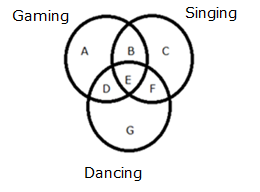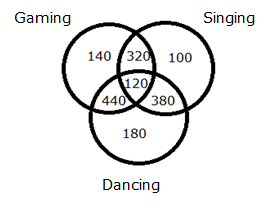Caselet DI for bank Clerk Mains exams are available here. Caselet DI is an important type in the data interpretation topic. In quantitative aptitude DI is a very important topic to score marks. In the IBPS Clerk Mains exams, you can expect at least 2 sets of DI, covering a total of 10 to 12 marks. Many candidates will skip the caselet DI in the exam. But if you practice well, you can easily solve the caselet DI questions. So, practice more caselet DI for bank exams. Here we have provided various models of Caselet DI for bank Clerk Mains exams. For your regular practice, you can utilize these caselet DI pdf and quiz.
What is caselet DI? – In the caselet DI, they will give the data in wordings. You have to study and interpret the data correctly. Then you will have to calculate as per the given data and complete the DI. In this way you can able to solve the questions in caselet DI.
Banking & Insurance Exam Study Materials
Importance of Caselet DI for Bank Clerk Mains Exams
Here we have discussed the importance of caselet DI for bank Clerk Mains exams..
- If you solve a caselet DI, then you can easily solve 4 to 5 questions in that set.
- If you are weak in application sums, then you can go for caselet DI in the exam..
- Easy to medium level caselet DI questions can be solved within 3 to 4 minutes. SO, it will fetch you around 5 marks.
So, candidates practice all the sets of caselet DI for bank Clerk Mains exams here.
Start Quiz
Directions (01-05): Study the following information carefully and answer the questions given below.
There are 450 students from different departments CSE, ECE, EEE and Mech and each of them like different colors-Red, Blue, Yellow and Pink. There are 100 students like red colors and ratio of the number of students who like Blue in CSE to Mech is 4:5. Number of students who like yellow in EEE departments is 5 more than the number of students who like Blue in Mech departments. Out of 10% of the total students like Pink in EEE which is 10 more than the number of students who like yellow in Mech. Ratio of the number of students who like yellow in Mech to number of students who like Blue in ECE is 7:10. Ratio of the number of students who like red in CSE to EEE is 3:2. The number of students who like red color in ECE department is 10 less than the number of students who like Blue in the same department. The number of students who like Blue in EEE department is 5 which is half of the number of students who like red in Mech. Sum of the number of students who like red in CSE department and the number of students who like Blue in EEE department is equal to the number of students who like Pink in ECE. The number of students who like Yellow in EEE is 5 less than the number of students who like Pink in ECE. The number of students who like Pink in CSE is 10 more than the number of students who like Pink in Mech. The number of students who like yellow in CSE is 10. Number of students who like yellow in ECE is equal to the number of students who like Blue in Mech.
1) What is the difference between the total number of students who like Pink and Blue in all the departments together?
A.20
B.40
C.30
D.50
E.None of these
2) What is the ratio of the total number of students in Mech to CSE?
A.1:1
B.2:1
C.1:2
D.3:2
E.2:3
3) What is the difference between the average number of students who like Pink in ECE and EEE department and the average number of students who like yellow in ECE and Mech?
A.8
B.12
C.10
D.14
E.18
4) What is the difference between the total number of students who like ECE and EEE students?
A.10
B.30
C.20
D.40
E.None of these
5) What is the ratio of the number of students who like yellow in EEE to number of students who like Red in CSE?
A.2:1
B.1:2
C.3:2
D.3:4
E.None of these
Directions (06-10): Study the following information carefully and answer the given questions?
There is a certain number of students studied in a school. Out of the total students, 51 % like Gaming, 46 % like Singing and 56 % like Dancing. 22 % like Gaming and Singing, 25 % like Singing and Dancing and 28 % like Gaming and Dancing, 16 % doesn’t like anyone of the three extra activities. 120 students like all the three extra activities.
6) Find the ratio between the total number of students who like at least two extra activities to the total number of students who like only Dancing?
A.9: 4
B.8: 3
C.5: 2
D.7: 1
E.None of these
7) Total number of students who like only Singing is approximately what percentage more/less than the total number of students who like all the three extra activities?
A.17 % more
B.5 % more
C.17 % less
D.30 % more
E.30 % less
8) Find the total number of students who like Gaming and Singing but not Dancing?
A.440
B.480
C.520
D.560
E.None of these
9) Total number of students who like only Gaming and Dancing is what percentage of total number of students who like Singing and Dancing?
A.88 %
B.82 %
C.75 %
D.95 %
E.106 %
10) Find the total number of student who like at most one extra activity?
A.700
B.740
C.680
D.620
E.None of these
Answers :
Directions (1-5) :
Number students like red = 100
Number of students like Pink in EEE = 10/100 * 450 = 45
Number of students like yellow in Mech = 45 – 10 = 35
Number of students like Blue in ECE = 10/7 * 35 = 50
Number of students like yellow in CSE = 10
Number of students like Blue in EEE = 5
Number of students like red in Mech = 10
Number of students like Red in ECE = 50 – 10 = 40
Number of students like red in CSE = 3/5 * 50 = 30
Number of students like Red in EEE = 2/5 * 50 = 20
Number of students like Pink in ECE = 30 + 5 = 35
Number of students like yellow in EEE = 35 – 5 = 30
Number of students like Blue in Mech = 30 – 5 = 25
Number of students like Blue in CSE = 4/5 * 25 = 20
Number of students like yellow in ECE = 25
Total number of students like Blue = 20 + 50 + 5 + 25 = 100
Total number of students like Yellow = 10 + 25 + 30 + 35 = 100
Number of students like Pink = 450 – 100 – 100 – 100 = 150
Number of students like Pink in CSE and Mech = 150 – 35 – 45 = 70
Number of students like Pink in CSE = 40
Number of students like Pink in Mech = 30

1) Answer: D
Difference = 150 – 100 = 50
2) Answer: A
Required ratio = (10 + 25 + 35 + 30):(30 + 20 + 10 + 40)
= 100:100
= 1:1
3) Answer: C
Average of Pink in ECE and EEE = (35 + 45)/2 = 40
Average of students who like Yellow in ECE and Mech = (25 + 35)/2 = 30
Difference = 40 – 30 = 10
4) Answer: E
ECE = 40 + 50 + 25 + 35 = 150
EEE = 20 + 5 + 30 + 45 = 100
Difference = 150 – 100 = 50
5) Answer: E
Required ratio = 30:30 = 1:1
Directions (6-10) :

Let the total number of students in a school be x,
A + B + E + D = 51 % of x = (51/100) * x
B + C + E + F = 46 % of x = (46/100) * x
D + E + F + G = 56 % of x = (56/100) * x
B + E = 22 % of x = (22/100) * x
E + F = 25 % of x = (25/100) * x
D + E = 28 % of x = (28/100) * x
Total number of students who like all the three extra activities (E) = 120
Total number of students who doesn’t like any extra activities = 16 % of x = (16/100) * x
B = (22/100) * x – 120
F = (25/100) * x – 120
D = (28/100) * x – 120
A = (1/100) * x + 120
C = 120 – (1/100) * x
G = (3/100) * x + 120
Given,
= > A + B + C + D + E + F + G + 16 % of x = x
= > (1/100) * x + 120 + (22/100) * x – 120 + 120 – (1/100) * x + (28/100) * x – 120 + 120 + (25/100) * x – 120 + (3/100) * x + 120 + 16 % of x = x
= > 120 + (94/100) * x = x
= > (6/100) * x = 120
= > x = 120 * (100/6) = 2000

6) Answer: D
The total number of student who like at least two extra activities
= > 320 + 120 + 440 + 380 = 1260
The total number of student who like only Dancing
= > 180
Required ratio = 1260: 180 = 7: 1
7) Answer: C
Total number of student who like only Singing = 100
Total number of students who like all the three extra activities = 120
Required % = [(20 / 120] * 100 = 16.66 % = 17 % less
8) Answer: D
The total number of student who like Gaming and Singing but not Dancing
= > 140 + 320 + 100 = 560
9) Answer: A
Total number of students like only Gaming and Dancing
= > 440
Total number of students like Singing and Dancing
= > 120 + 380 = 500
Required % = (440/500) * 100 = 88 %
10) Answer: B
The total number of student who like at most one extra activity
= > 140 + 100 + 180 + 2000 * (16/100)
= > 140 + 100 + 180 + 320
= > 740





